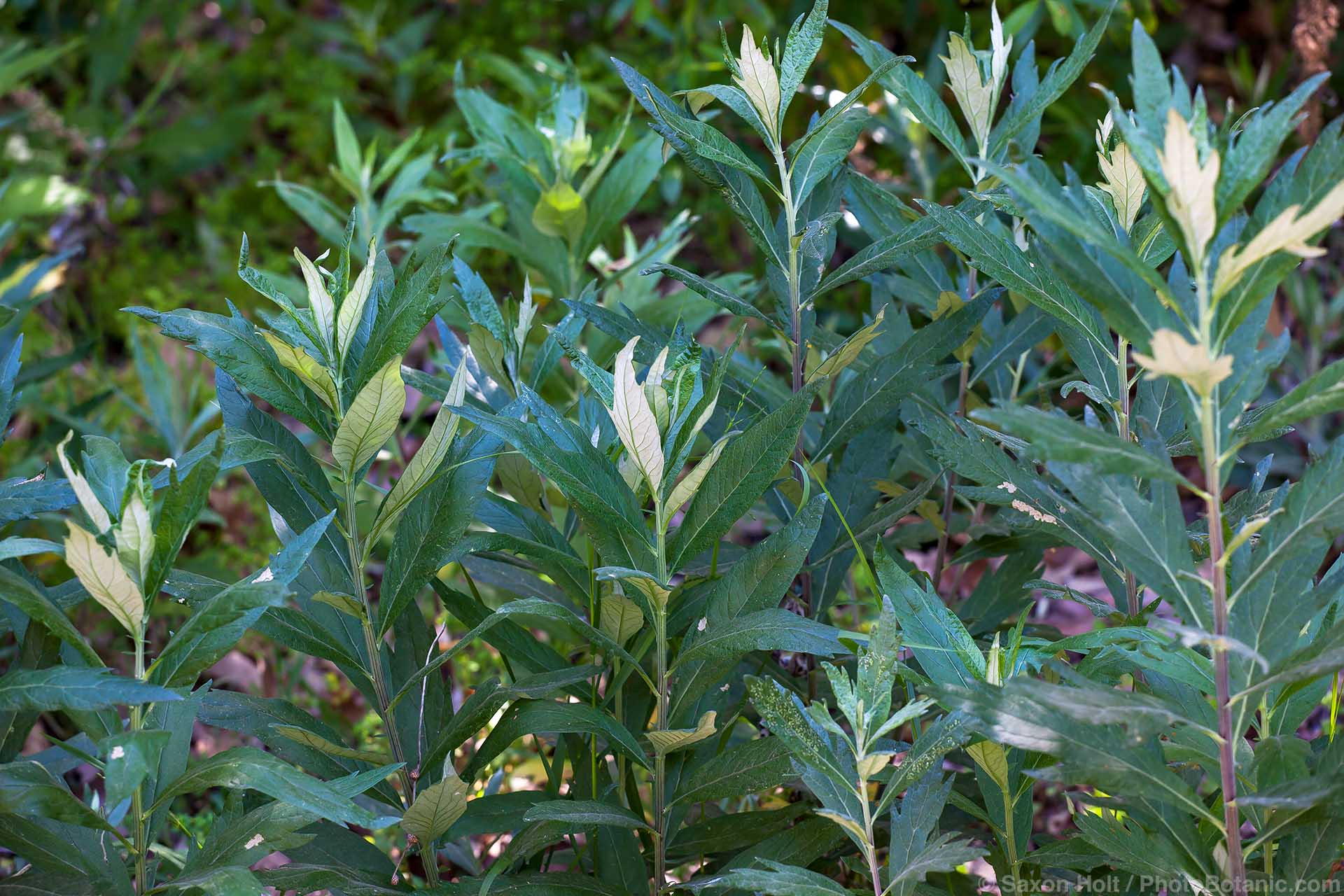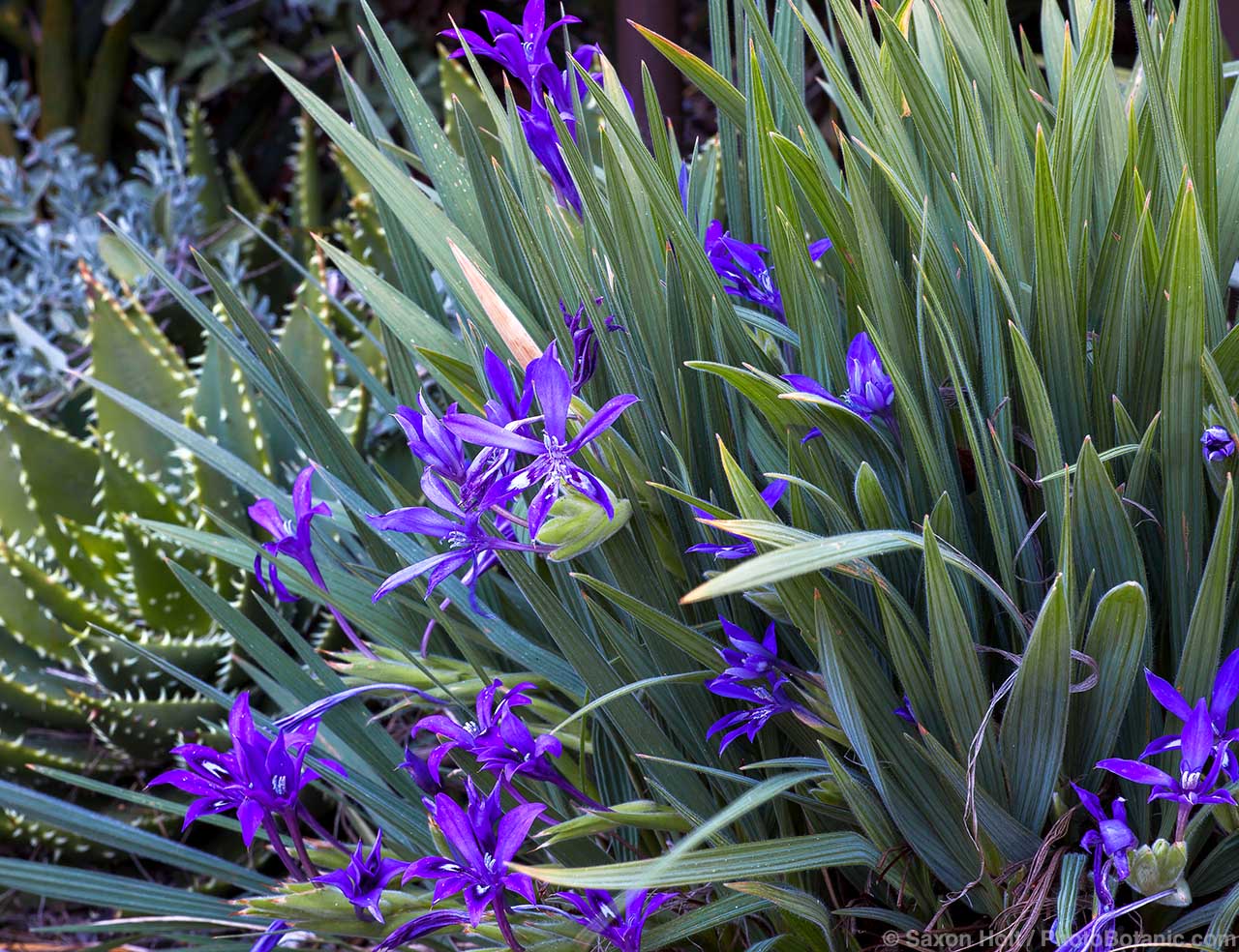Environmental Benefits of Perennial Grasses
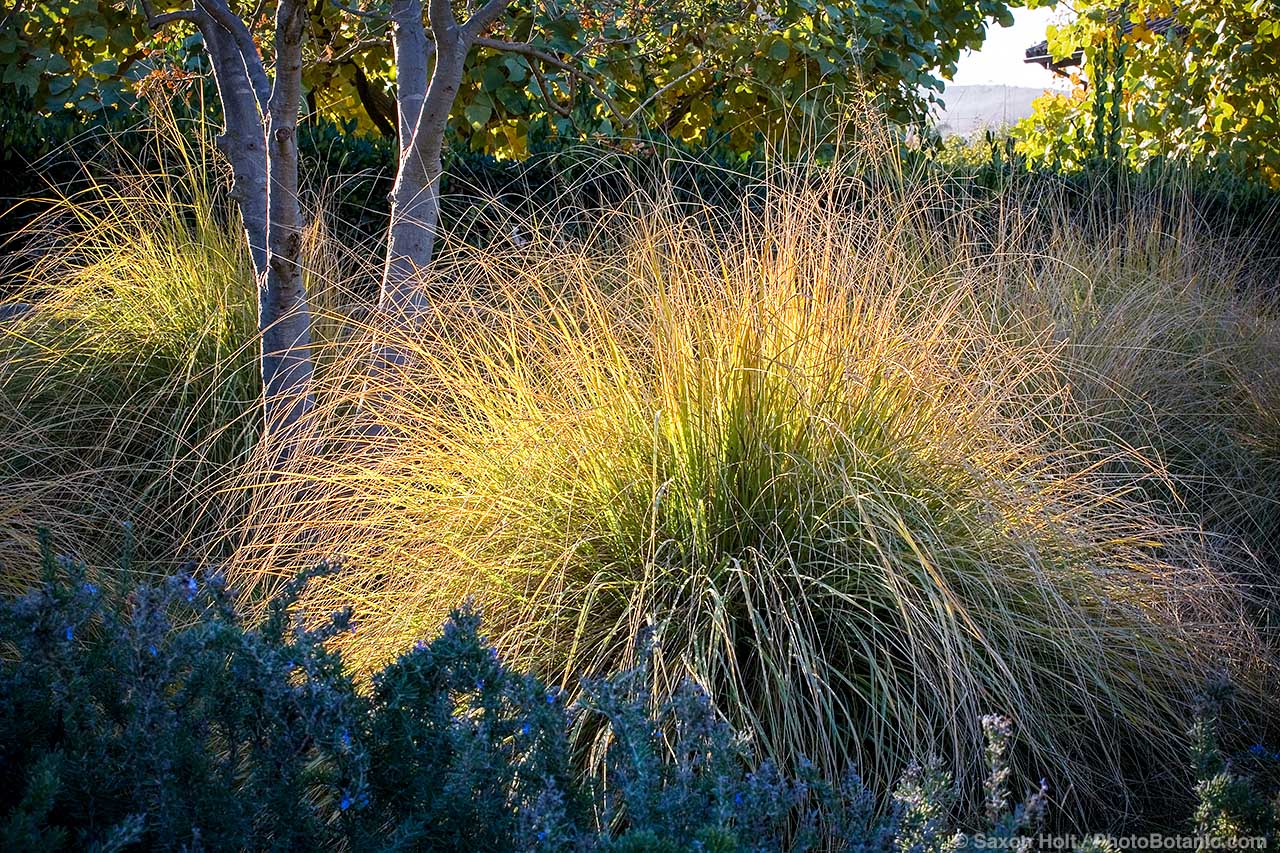
Share This!
Perennial grasses have long been popular garden subjects, usually for their aesthetic value — the meadow effect when used in large drifts, the drama when backlit by the setting sun, the architectural beauty of those that retain their formal shape even into dormancy.

Festuca mairei (Atlas fescue) catches afternoon light in a California garden
There are, of course, other good reasons to use perennial grasses liberally in both private and public landscapes. Grasses are an integral part of many ecosystems and they provide many environmental benefits at local, regional, and global levels.
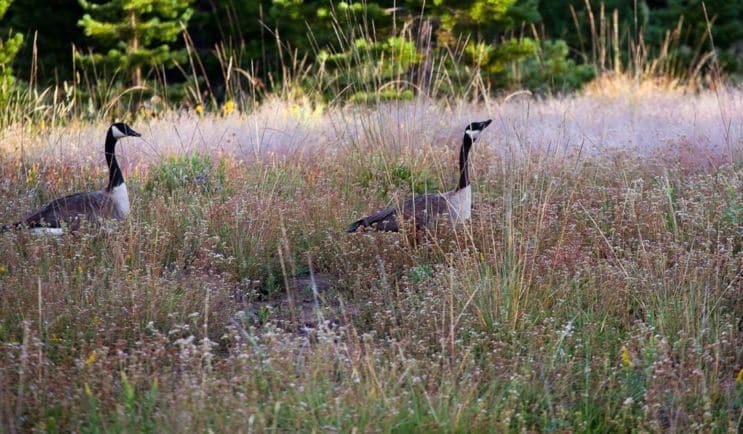
Canada geese feed on the nutritious seeds of native perennial grasses in a California meadow
Natural and semi-natural grasslands worldwide protect soil from erosion by slowing runoff and improving infiltration. Grasslands capture, store, and purify water, helping to reduce flooding and protecting surface water quality.
Grasslands provide cover and food for wildlife, including many pollinators. They cycle nutrients and build soil quality by aerating heavy soils, holding light soils together, and adding organic matter. Over time, perennial grasslands can sequester large amounts of carbon in roots and soil, helping to reduce atmospheric carbon dioxide, a greenhouse gas implicated in climate change.
Impacts on climate likely are significant only at a global scale, but other benefits of perennial grasses carry over to regional and local levels. Perennial grasses are used in bioswales in municipal and institutional stormwater systems and in residential rain gardens, where they capture and filter out pollutants in runoff from roofs, driveways, streets, and parking lots.
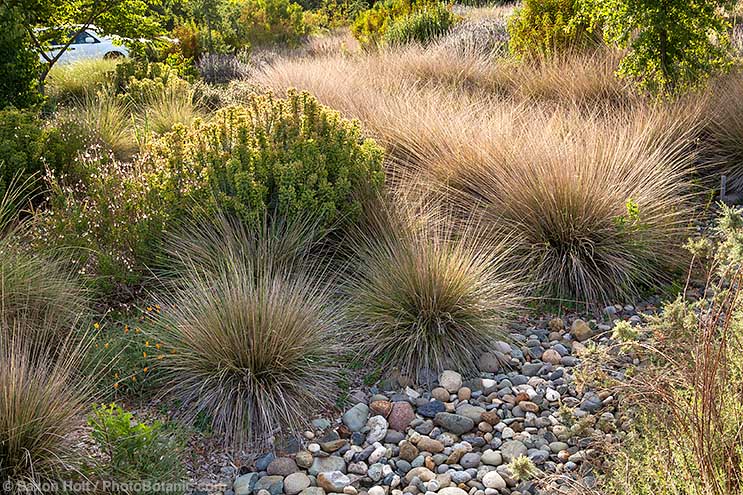
Bioswale with Muhlenbergia dubia (pine muhly) at University of California, Davis, filters out pollutants from parking lot runoff
Perennial grasses are increasingly used to replace extensive turf areas in business parks, on university campuses, and in common areas of housing developments, where they reduce both maintenance and water use while supporting pollinators and other wildlife.
In gardens of almost any size, perennial grasses provide similar benefits on a smaller scale. Their dense, fibrous surface roots discourage establishment of annual weeds while their deeper roots, which can extend eight to ten feet down, stabilize slopes and enrich lower soil profiles. Most perennial grasses are resilient and adaptable and over time can improve compacted, infertile, or poorly drained soils.
The soil building, erosion control, and water purification effects of perennial grasses can be had in landscapes composed entirely of grasses and grasslike plants. The effects on biological diversity, however, tend to be greatest if grasses are combined with other flowering perennials and shrubs, which is the way most grasslands appear in nature.
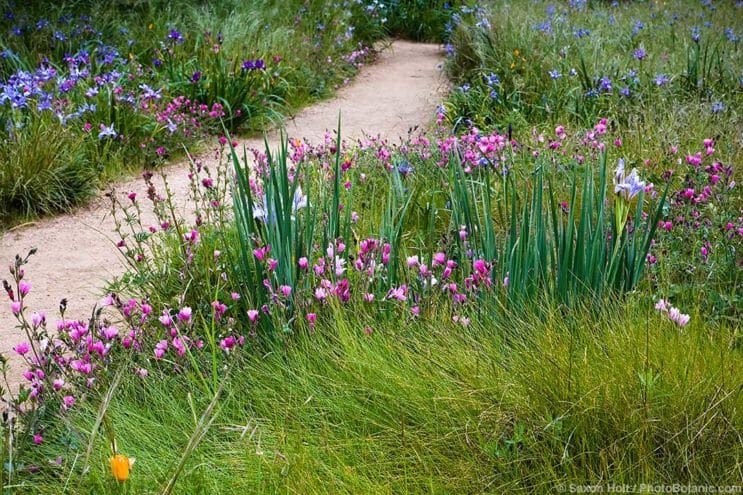
Pacific Coast irises, checkerbloom, and other native perennials planted with red fescue (Festuca rubra) attract beneficial insects that feed on nectar
When designing a grassland or meadow landscape it’s best to include a diverse selection of grasses and herbaceous and shrubby perennials, preferably natives, even better if they are found growing together in nature. If you have the space, it is also important to surround or edge your meadow with shrubs and trees, again preferably native, that provide diverse vegetation “layers” (low and herbaceous, mid-sized woody, and medium and high canopies). Diversity in plant life will help to provide for the food, shelter, and reproductive needs of a variety of insects, birds, small mammals, and other wildlife.
As with any planting, care should be taken to select grasses suited to the conditions in which they will be planted. There are grasses for sun and others for shade or part shade. Some grasses are adapted to both drought and seasonal inundation and others are not. Some grasses stay put, others creep, and some are inclined to take over aggressively. These traits are beneficial in some situations and not in others. You don’t want to have to irrigate a rain garden or devote precious gardening time to fighting an invader.

Two rhizomatous dune grasses (Leymus triticoides and L. mollis) and a dune sedge (Carex pansa) are used to stabilize sand dunes in Malibu, California. All are native and suited to the task at hand, but the grasses can be too rambunctious for small gardens. The sedge is smaller and spreads more slowly.
Share This!
Related Articles
By: Nora Harlow
By: Nora Harlow
By: Nora Harlow



